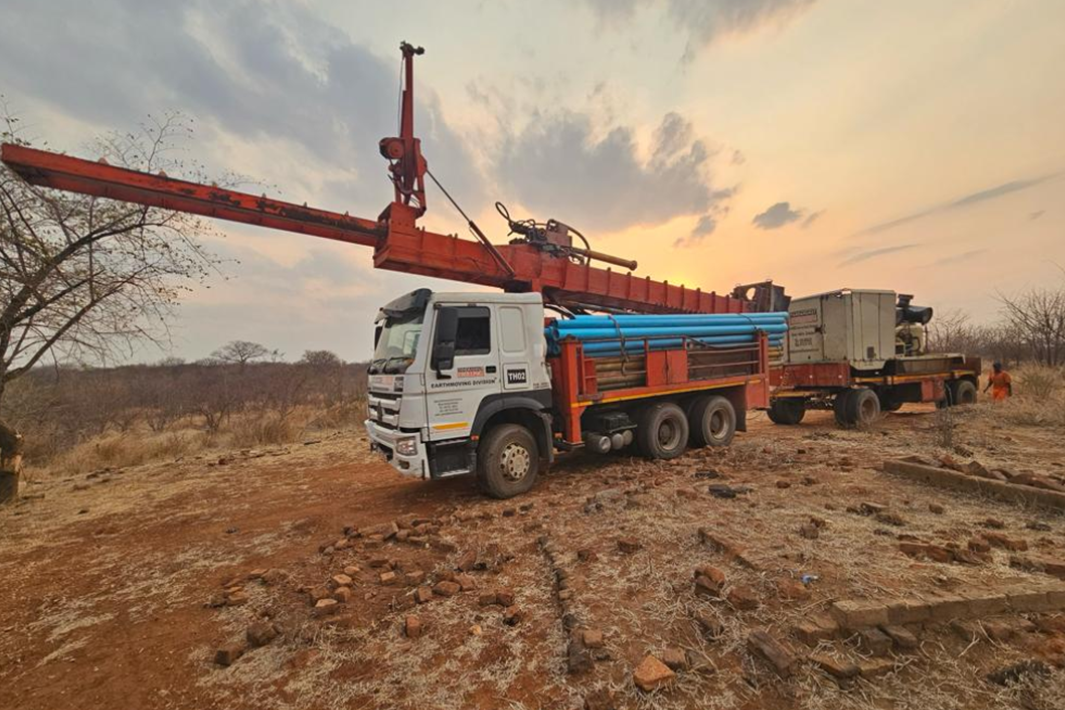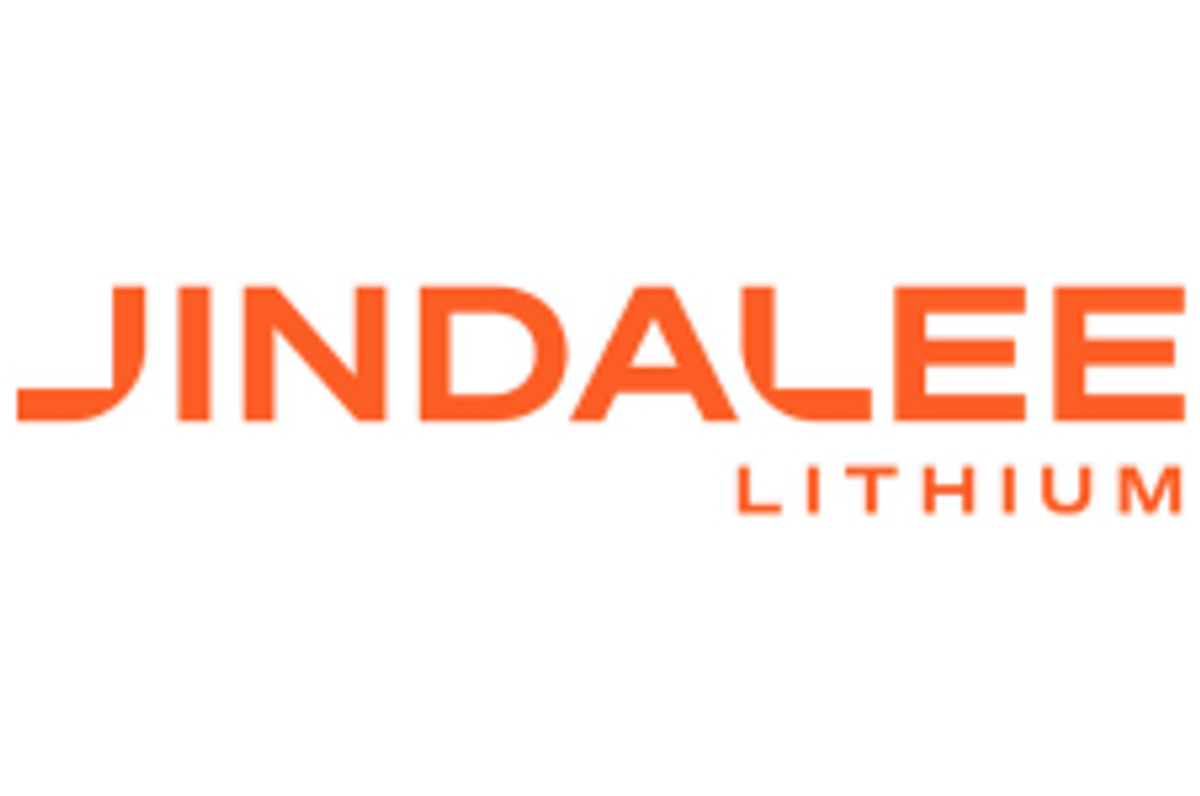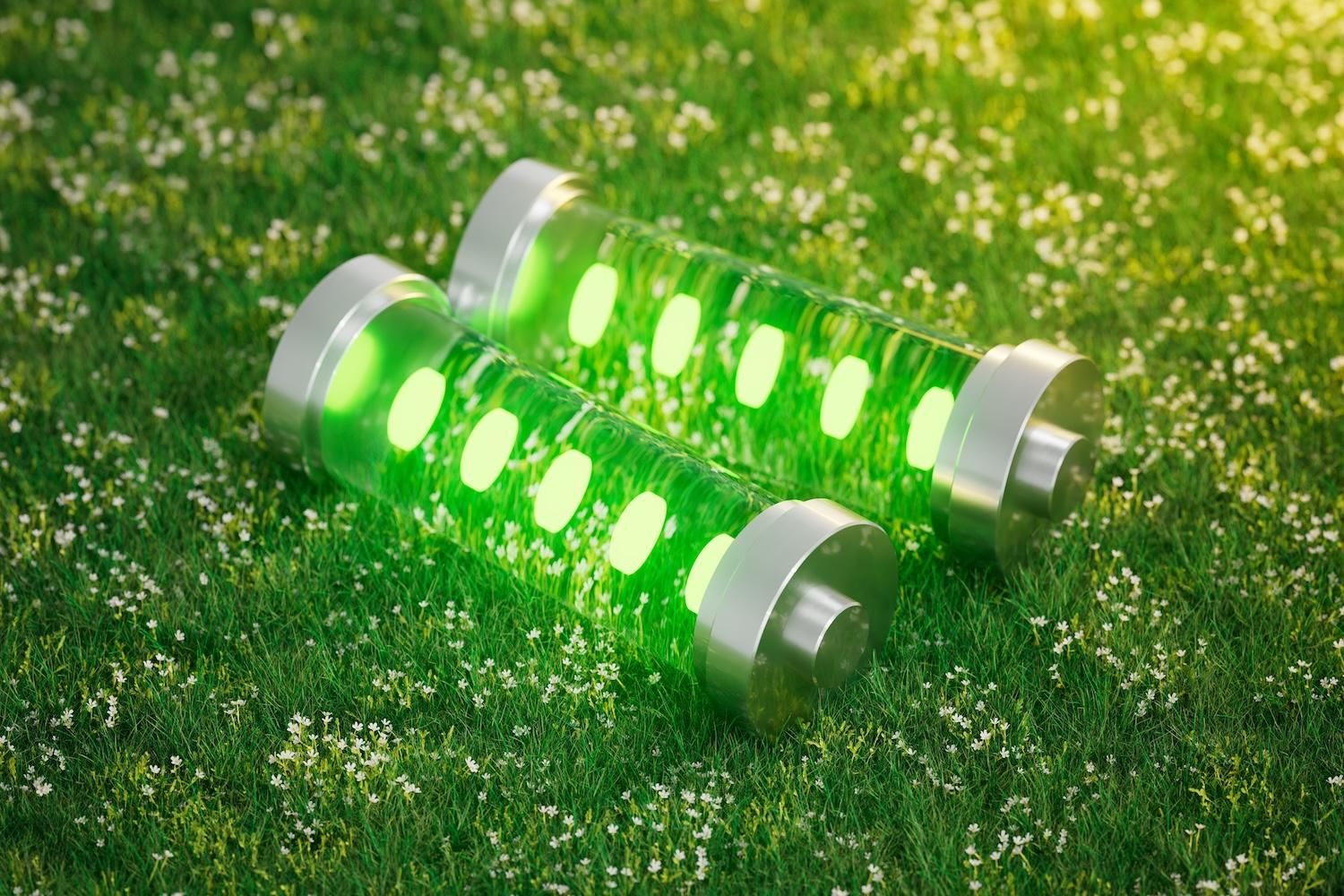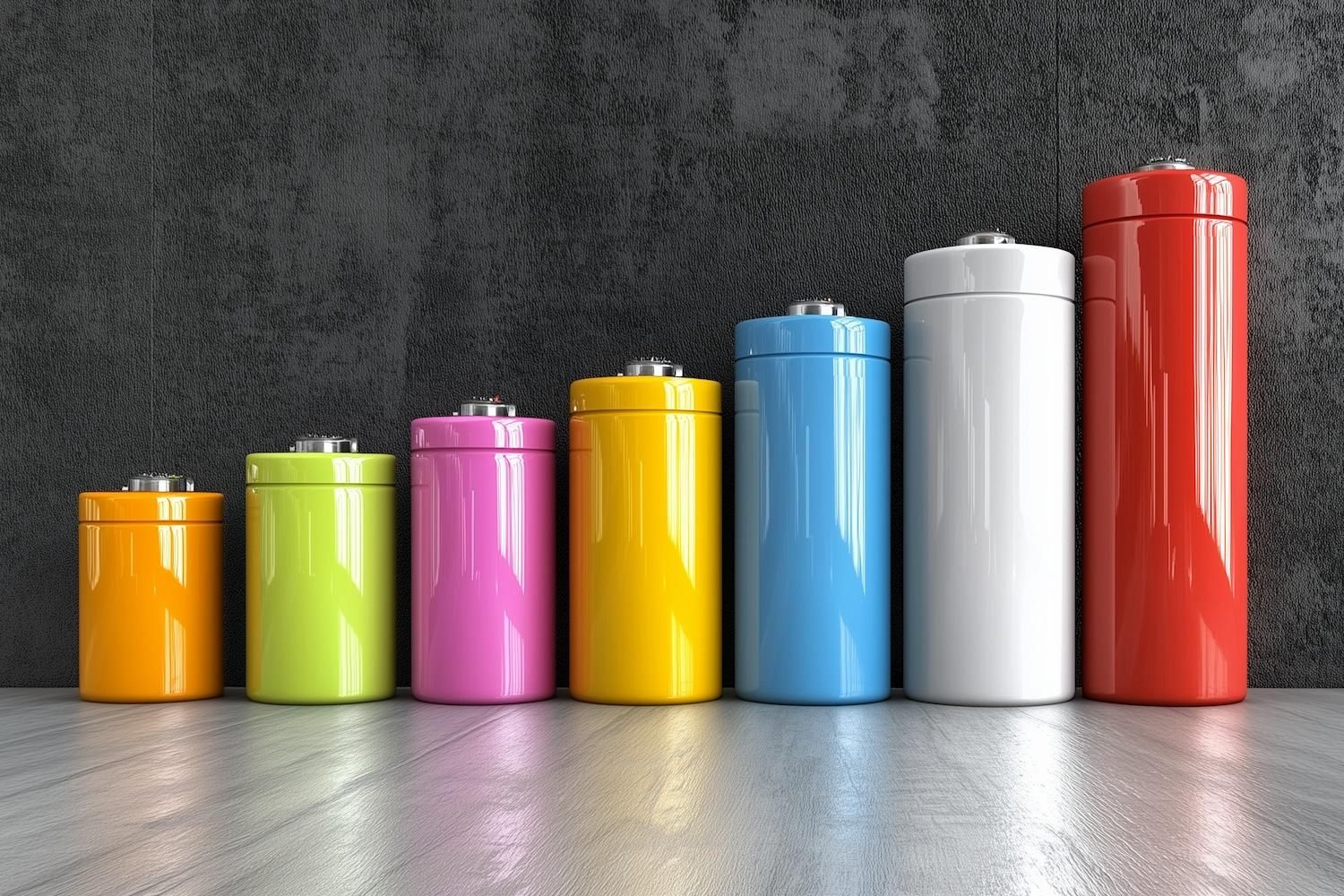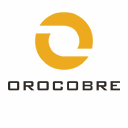
Allkem Limited (ASX|TSX: " AKE" the " Company" ) provides an update on its global lithium portfolio, business activities and financial position 1 as at 31 March 2023.
HIGHLIGHTS
OPERATIONS
- The Olaroz Lithium Facility 2 achieved production of 4,102 tonnes of lithium carbonate up 38% on the previous corresponding period (" PCP" ) and a new record for a March quarter
- Lithium carbonate sales were 2,904 tonnes, generating record Olaroz quarterly revenue of ~US$159 million with a record gross cash margin of 91% or US$47,814/tonne
- Excluding shipments to Naraha, third party lithium carbonate sales for the quarter averaged US$53,175/tonne 3 FOB, meeting guidance and up slightly from the December quarter
- The weighted average price for third party sales of lithium carbonate products in Q4 FY23 is expected to be approximately US$42,000/tonne subject to final sales allocation
- Mt Cattlin produced 38,915 dmt of spodumene concentrate at 5.3% Li 2 O grade during the quarter, a ~2.3x increase quarter on quarter (" QoQ "). Recovery of 60% demonstrates significant improvement in grade and favourable mineralisation as mining moves to more central zones of the main ore body
- Spodumene sales of 21,553 dmt generated revenue of ~US$123 million 4 with a gross cash margin of 81% based on an average sales price of US$5,702 /dmt CIF for SC 5.2%, which corresponds to approximately US$6,500 /dmt on a SC6 CIF basis, up 8% QoQ and above prior guidance. Pricing in the June quarter is expected to be approximately US$5,000/dmt CIF SC6
- An additional US$33 million of revenue was generated from sales of 54,064 dmt of low grade spodumene concentrate
DEVELOPMENT PROJECTS
- At Naraha, approximately 670 tonnes of lithium hydroxide produced during the quarter has been sold to third party customers. Work continues on product quality and operational improvements
- Olaroz Stage 2 reached over 98.2% completion, with commissioning activities underway and first production expected in Q2 CY23
- The Olaroz Resource increased by 27% to 20.7 million tonnes (" Mt ") of LCE following expansion drilling in the south and inclusion of the recently acquired Maria Victoria property
- The first two strings of ponds at Sal de Vida (" SDV ") Stage 1 reached over 92% completion and engineering of the third string has reached over 78% completion
- At James Bay, the Federal government approved the ESIA. Comex approval (Quebec government and CREE Nation), agreement of the IBA and procedural construction permitting remain in progress
FINANCIALS AND CORPORATE
- Group revenue for the quarter was US$315 million and group gross operating cash margin 1 was approximately US$269 million (85%)
- At 31 March group net cash 5 was US$577.9 million up US$25.9 million from 31 December 2022
- Progress continues on a proposed project finance facility of up to US$200 million for the Sal de Vida Project by the International Finance Corporation
- Christian Cortes was appointed as Acting CFO after the passing of Neil Kaplan
- US$22 million of interest on shareholder loans was paid from Olaroz to Allkem and Toyota Tsusho
- During the quarter, TLC (Naraha) received the Japanese government subsidy towards the construction of Naraha of JPY 3 billion (~US$23 million) which was utilised to repay borrowings
SUSTAINABILITY
Allkem continues to focus on a long-term commitment to environmental and social performance and transparent reporting across its operations and growth projects. In February, Allkem was included in the 2023 edition of the S&P Global Sustainability Yearbook. This means that Allkem's Corporate Sustainability Assessment score is in the top 15% of the industry.
Human Capital - Safety performance
Allkem recorded a 12-month moving average Total Recordable Injury Frequency Rate of 1.72 (per million hours) at the end of March, a 9% improvement QoQ. The 12-month moving average Lost Time Injury Frequency Rate was 0.37 (per million hours).
Four Recordable Injuries were incurred by contractors during the quarter: two at Mt Cattlin (Restricted Work Injury and Medical Treatment Injury) and two at Sal de Vida (Lost Time injuries). Investigations have been carried out and corrective actions have been implemented.
As part of Allkem's strategic improvement program, Field Critical Control Checks and a safety perception survey are underway at Mt Cattlin. A Behavioural Based Safety program has been initiated both at Olaroz and Sal de Vida which encourages workers to actively participate in the detection and correction of safety deviations.
Decarbonisation - Net zero commitment
Allkem continues to investigate the most efficient pathway to net zero scope 1 and 2 operational GHG emissions. The company's Net Zero Taskforce has identified six projects to date that are now being further evaluated for inclusion in Allkem's Net Zero Action Plan.
Natural Capital – Impact assessment
In January, Allkem received Federal Government approval for the James Bay ESIA, determining that the project's environmental mitigation measures provide a sustainable path for the project to proceed. During the quarter, the Company progressed the environmental plans under the conditions of the approval in partnership with the communities of Waskaganish, Waswanipi and Eastmain.
Participatory environmental monitoring was also carried out for the Olaroz project during February with representatives from five local communities taking part.
Shared Value – Community initiatives
Allkem is committed to building shared value with community stakeholders across all operations and projects. During the quarter, Allkem participated in the Olaroz Chico Lithium Festival along with other businesses, local communities and government representatives. The festival showcased initiatives such as the local greenhouse projects developed in partnership with Allkem's Shared Value team. Workshops to promote regional skill development were also held in the Antofagasta de la Sierra community near the Sal de Vida project.
The Mt Cattlin Community Consultation Group continues to identify opportunities to create shared value with representatives from the Ravensthorpe and Hopetoun communities. Applications for a further round of the ‘Pitch your Project' initiative were received and evaluated during the quarter.
OPERATIONS
OLAROZ LITHIUM FACILITY
Lithium Carbonate Jujuy Province, Argentina
Production
Production for the March quarter was 4,102 tonnes, up 38% on the previous corresponding period. Approximately 65% of production was technical grade.
Product quality remains high reflecting excellent plant reliability, low downtime and improved energy efficiency with better operating practices and high brine feedstock concentration.
Sales and financial performance
Quarterly product sales volume was down 7% QoQ to 2,904 tonnes of lithium carbonate of which 39% was battery grade. Sales were lower than production due to the deferral of volumes allocated to Naraha, significantly higher than expected production from Olaroz stage 1 and a decision later in the quarter to withhold spot sales into the Chinese market which currently does not reflect underlying supply/demand fundamentals.
Total sales revenue was a record ~US$159 million including US$5.7 million related to sales of a lithium carbonate by-product. The average price received from third party sales was US$53,175/tonne on an FOB 2 basis, in line with the previous quarter.
Cost and margins
Cash cost of goods sold for the quarter was US$4,924/tonne up 5% from prior quarter mainly due the expiry of export incentives during the quarter. Cost of sales have increased over the last year due to material increases in the price of soda ash, lime, natural gas and employment costs from increased head count and inflation/devaluation impacts.
Gross cash margin for the quarter was 91% or US$47,814/tonne.
Table 1: Olaroz March quarter production and sales metrics
| Metric | Units | Mar Q FY23 | Dec Q FY23 | QoQ % | PCP Mar FY22 | PCP % |
| Production | tonnes | 4,102 | 4,253 | -4% | 2,972 | 38% |
| Sales | tonnes | 2,904 | 3,131 | -7% | 3,157 | -8% |
| Average price received | US$/tonne | 52,738 | 46,706 | 13% | 27,236 | 94% |
| Third party price received | US$/tonne | 53,175 | 53,013 | 0% | 27,236 | 95% |
| Cash cost of goods sold 1 | US$/tonne | 4,924 | 4,682 | 5% | 3,811 | 29% |
| Revenue | US$M | 159 | 151 | 5% | 86 | 85% |
| Gross cash margin (Av. Price) | US$/tonne | 47,814 | 42,024 | 14% | 23,425 | 104% |
| Gross cash margin | % | 91% | 90% | 1% | 86% | 5% |
- Excludes royalties, export tax and corporate costs
Lithium carbonate pricing
The weighted average price for third party sales of lithium carbonate products in Q4 FY23 is expected to be approximately US$42,000/tonne subject to final sales allocation.
Stage 2 expansion
Overall construction of the Olaroz Stage 2 lithium facility reached 98.2% completion by the end of the March quarter. All evaporation ponds, lime plants, soda ash handling and infrastructure are complete.
The carbonation plant reached 94% overall completion (Figure 1) with over 97% of mechanical equipment installed and 100% of building structures and foundation equipment completed. Electromechanical interconnecting activities continue in the carbonation plant.
Pre-commissioning activities are underway within the carbonation plant, with full process plant commissioning underway and progressing through the June quarter.
Figure 1: Olaroz stage 2
Resource Extension
The revised Mineral Resource Estimate increased by 27% to 20.7 Mt, comprising 7.6 Mt of Measured Resource, 7.1 Mt of Indicated Resource and 6 Mt of Inferred Resource (Table 2).
The recently acquired Maria Victoria property in the north of Olaroz contributed 2.8 Mt of the increase in resources, with the remainder of the upgrade relating to expansion of the resource to the south following completion of the expansion drilling.
The resource estimate is restricted to directly beneath the Olaroz salar surface, except for the area at the south, where influence from expansion hole E26 extends the resource beneath gravels to the west of the salar and towards the Cauchari resource.
Table 2: Olaroz Lithium Resource Estimate – March 2023
| Interval (metres) | Volume Sediment (m 3 ) | Specific Yield Porosity | Volume Brine (m 3 ) | Li (mg/l) | Tonnes Li | Tonnes LCE |
| Measured Resources 0-650 m | ||||||
| 0-200 overall & 0-650 (in East) | 33,316,374,710 | 6.46% | 2,152,306,738 | 657 | 1,420,000 | 7,550,000 |
| Indicated Resources 200-650 m | ||||||
| 200-650 and 200-350 (North & South) | 35,645,703,500 | 6.16% | 2,196,423,559 | 612 | 1,340,000 | 7,130,000 |
| Measured and Indicated Resources (M&I) 0-650 m | ||||||
| 0-650 combined | 68,962,078,210 | 6.31% | 4,348,730,296 | 634 | 2,760,000 | 14,680,000 |
| Inferred Resources 350 ->650 m | ||||||
| 350-650 (North & South) | 17,043,607,000 | 5.93% | 1,010,534,106 | 578 | 585,000 | 3,100,000 |
| >650 in North | 20,681,459,500 | 4.13% | 853,671,348 | 636 | 540,000 | 2,870,000 |
| Total | 106,687,144,710 | 5.82 % | 6,212,935,750 | 625 | 3,885,000 | 20,650,000 |
MT CATTLIN
Spodumene concentrate Ravensthorpe, Western Australia
Production
Grade control drilling was conducted earlier in the period to confirm the location and grade of ore that will be mined over the remainder of H2 FY23. Results from the drilling have confirmed expectations that production will increase as mining progressively moves from the upper end of the orebody into more central zones. The Company anticipates that production for the June half will be approximately 80,000 – 90,000 tonnes with annual production of 114,000 – 124,000 tonnes.
In line with this guidance, 38,915 dmt of spodumene concentrate was produced at 5.3% Li 2 O grade in the March quarter, a ~2.3x increase from the prior quarter. Recovery of 60% demonstrates significant improvement in grade and favourable mineralisation as mining moves to more central zones of the main ore body.
Sales and financial performance
21,533 dmt of spodumene concentrate was shipped during the quarter (with a further shipment occurring in the first week of April) at an average grade of 5.2% Li 2 O. This generated revenue of US$123 million at an average realised sales price of US$5,702/dmt CIF, an 8% QoQ increase which corresponds to approximately US$6,500/dmt CIF on an SC6 equivalent.
An additional US$33 million in revenue was generated from shipments of 54,064 dmt of low grade spodumene concentrate.
Customer demand in the spodumene market remains robust, driven by lithium hydroxide requirements outside China, and pricing has better resisted the spot price erosion observed in China on other lithium products. Pricing in the June quarter is expected to be approximately US$5,000/dmt CIF SC6.
Cost and margins
The FOB cash cost of production for the quarter was US$1,033/dmt of spodumene concentrate which includes higher unit mining costs and increased amortisation of pre-strip expenses resulting in costs being similar to the prior quarter. The gross cash margin for the quarter was 81% or approximately US$99 million. In addition, low grade concentrate sales contributed approximately US$26 million of gross cash margin.
FY23 cash cost of production is forecast to be ~US$950/t dmt FOB recognising the higher mining and pre-strip expenses noted above.
Table 3: Mt Cattlin FY23 quarterly operational and sales performance
| Metric | Units | Mar 23 | Dec 22 | Sep 22 |
| Production | ||||
| Recovery | % | 60 | 37 | 25 |
| Concentrate produced | dmt | 38,915 | 16,404 | 17,606 |
| Grade of concentrate produced | % Li 2 O | 5.3 | 5.3 | 5.3 |
| Sales | ||||
| Concentrate shipped | dmt | 21,553 | 15,702 | 21,215 |
| Grade of concentrate shipped | % Li 2 O | 5.2 | 5.3 | 5.4 |
| Realised price | US$/dmt CIF | 5,702 | 5,284 | 5,028 |
| Revenue 1 | US$ million | 122.9 | 83.0 | 106.7 |
| Costs of production | ||||
| Cash cost of production | US$/t FOB | 1,033 | 1,016 | 796 |
- Excluding marketing and royalties.
Resource Update
Subsequent to the end of the quarter the mineral resource estimate for Mt Cattlin was updated, with 90% of the resource now in the Measured and Indicated categories.
Table 4: Mt Cattlin Mineral Resource at 31 December 2022 reported at 0.4% cut off grade - All material types.
| Category | Tonnage | Grade | Grade | Contained Metal | Contained metal | Nett contained metal variance to prior Statement | |
| Mt | % Li2O | ppm Ta 2 O 5 | (‘000) t Li 2 O | lbs Ta2O5 | % | ||
| Measured | In-situ | 0.1 | 1.0 | 170 | 1 | 37,000 | 100% |
| Indicated | In-situ | 9.6 | 1.4 | 134 | 134 | 2,899,000 | 130% |
| Stockpiles | 1.8 | 0.8 | 122 | 14 | 484,000 | -25% | |
| Inferred | In-situ | 1.3 | 1.3 | 169 | 17 | 516,000 | -80% |
| Total Resource at 31 December 22 | 12.8 | 1.3 | 179 | 167 | 3,936,000 | 4% | |
Further diamond drilling has been completed to support geometallurgical and geotechnical test work to inform the Mt Cattlin mine life extension study, which aims to inform approvals and design of both potential opencut and underground options. Initial results are expected by mid CY23.
DEVELOPMENT PROJECTS
NARAHA
Lithium Hydroxide Naraha, Japan
Since successful first production of lithium hydroxide in late October, high product quality continues to be achieved enabling approximately 670 tonnes of technical grade lithium hydroxide to be sold to third party customers.
Operational focus continues to be on progressively increasing the product quality and consistency to allow commencement of customer qualification testing for battery grade hydroxide. This is being done in preference to a focus on volume, as high utilisation rates have already been confirmed.
SAL DE VIDA
Lithium Carbonate Catamarca Province, Argentina
Sal de Vida is expected to produce 45,000 tpa of predominantly battery grade lithium carbonate through an evaporation and processing operation at the Salar del Hombre Muerto site. Development will be delivered in two stages with Stage 1 currently in construction targeting 15,000 tpa production capacity.
Project execution
Construction of the first two strings of ponds reached over 90% completion with the first eight ponds completed and filled with brine (Figure 2). The third string of ponds has reached over 80% completion in engineering. The main brine pipeline is complete and 8 out of 10 production wells have been commissioned. Brine evaporation will continue during plant construction to provide evaporated feed for future production.
Camp expansion activities and procurement for long lead items continue. Detailed engineering on the process plant has advanced to 40% completion and mobilisation and delivery of pre-cast foundations is occurring.
The contract for construction and supply of solar energy to meet 30% of site power needs is in the final stages of negotiation.
Whilst many areas of the project such as bores, ponds and general infrastructure are well advanced, resourcing and procurement issues are potentially causing delays with the completion of the lithium carbonate plant. Allkem is working with its prime contractor and suppliers to ameliorate the impact of potential delays on the plant completion date and will advise any changes to the schedule once the work has been completed and mitigation measures have been put in place.
Figure 2: Sal de Vida Stage 1: First 2 string of ponds are 90% complete and carbonation plant development advances
JAMES BAY
Spodumene Concentrate Québec, Canada
James Bay is designed to produce ~330ktpa of spodumene concentrate utilising predominantly hydro power over a project life of 19 years.
Project execution
Detailed engineering continues alongside procurement activities including ordering of key long lead items and equipment packages (temporary camps, primary sub-station, process equipment, etc).
Engineering progress achieved 65% by the end of the quarter with engineering of the process plant package at 79%. Procurement of mechanical process equipment, electrical equipment and mine mobile equipment are completed to 88%, 82% and 84% respectively with receipt of vendor data continuing.
Hydro-Quebec successfully completed the installation of the powerline (weather related critical work) to connect hydro power to the site. Allkem's key operational personnel have been recruited.
Permitting
Approvals by the Joint Assessment Committee (Federal government) of the ESIA were obtained in January. Comex approval (Quebec government and CREE Nation) of the ESIA, agreement of the IBA and procedural construction permitting remain in progress. As part of this process, two public hearing sessions took place in January and the 1-month public consultation period ended in late February.
Engagement remains positive with community stakeholders including community consultations, meetings with key Cree stakeholders and discussions with the Eastmain community economic development branch to agree local economic benefits.
Once permits are secured, construction will commence, and the Company will update guidance for first production. Work is ongoing with engineering contractors to progress alternative commencement dates and evaluate opportunities to accelerate the construction schedule, including use of prefabricated modules.
Resource drilling
29,000 meters of resource extension drilling has been completed, reflecting a 51% increase over original plans. The program was extended into April to take advantage of favourable weather conditions and high productivity of drilling activities. A resource update is also currently being prepared.
LITHIUM MARKET
Demand
The first quarter of the calendar year is historically the slowest period of the year for lithium consumption due to adjustments to Electric Vehicle ("EV") subsidy policy, seasonal destocking, scheduled maintenance outages and the Lunar New Year break in the world's largest market, China. During the quarter, demand continued to grow steadily in volume, albeit at a lower rate than expected and slower than what many had become accustomed to over the last few quarters.
In China, some EV OEMs sought to gain market share through engaging in price discounting, which led consumers to delay purchases in the hope of further price reductions. The wait-and-see customer behaviour continued as Internal Combustion Engine ("ICE") vehicle OEMs pursued aggressive price reductions, in order to destock inventory that would be in breach of emissions targets being introduced in July 2023. This slower than expected EV growth impacted the battery material supply chain, which had procured feedstock and built capacity in anticipation for a higher growth rate. As a result, inventory levels reached what has been perceived as high level but, in reality, is a more normalised situation. This is in contrast to the extremely low stocks held in 2022, especially considering the complex, geographically diverse and geopolitically risky lithium supply chain characteristics.
Despite recent volatility, the fundamentals underpinning lithium demand remain very strong: EV sales continued to grow during the March quarter, with notably Chinese EV sales increasing by 25% YoY and sales in the US and EU also posting strong growth and higher-than-expected penetration against ICE vehicles. Despite a slower start to the calendar year, global EV sales forecasts remain at ~14 million units, implying a steady acceleration during the remainder of 2023. EV demand is strongly supported by government targets and policies, including the EU's parliamentary agreement that all new vehicles registered in Europe must be zero emission by 2035; and the more recently announced US Environmental Protection Agency rule that will require up to 60% of new car sales to be EVs by 2030, and 67% by 2032.
Supply
Delays to additional supply materialising on time and on budget continued throughout the quarter. This reflects the complexity involved in expansion projects, irrespective of the supply being brownfield or greenfield, in hard-rock or brines, upstream or midstream. Furthermore, consensus views on forecast supply appear optimistic in relation to qualification periods required for new production to be considered battery grade material. Whilst additional lithium supply is expected to be brought online in the near to medium term, the quantum of the increase is likely to continue to lag relative to consensus views on timing. Recent news about the shutdown of independent Chinese lepidolite production due to costs being higher than the local spot price are a reminder of how exposed the supply chain can be when relying on high cost and technically challenging swing capacity.
Estimated lithium chemical production in China fell 4% quarter on quarter, attributable to seasonal factors that have impacted demand. Spodumene concentrate volumes shipped to China from Australia for December to February 2023 were 20% higher compared to the PCP due to new supply from brownfield expansions and restarted idle capacity. However, spodumene supply remains tight despite production increases, with the majority of the product already locked under existing offtake arrangements or allocated for internal consumption by integrated producers.
CORPORATE AND FINANCIALS
Finance matters
Progress continues on a proposed project finance facility of up to US$200 million for the Sal de Vida Project by the International Finance Corporation.
US$22 million of interest on shareholder loans was paid from Olaroz to Allkem and Toyota Tsusho.
Christian Cortes was appointed as Acting CFO after the passing of former CFO, Neil Kaplan in February.
Financial position
At 31 March 2023 group net cash 5 was US$577.9 million up US$25.9 million from 31 December 2022. Net cash generated from operations and corporate was US$180.8 million, capital expenditure and working capital movements US$122.1 million, Naraha project cash generated US$21.7 million mainly due to the government subsidy, and payments of income tax US$54.5 million. At 31 March 2023, Allkem had available cash of $751.7 million.
US$2.3 million and US$76.7 million have been set aside as guarantees for the Naraha debt facility and Olaroz expansion debt facility respectively.
This release was authorised by Mr Martin Perez de Solay, CEO and Managing Director of Allkem Limited.
| Allkem Limited ABN 31 112 589 910 Level 35, 71 Eagle St Brisbane, QLD 4000 | Investor Relations & Media Enquiries Andrew Barber M: + 61 418 783 701 E: Andrew.Barber@allkem.co Phoebe Lee P: +61 7 3064 3600 E : Phoebe.Lee@allkem.co | Connect info@allkem.co +61 7 3064 3600 www.allkem.co | |
IMPORTANT NOTICES
This investor ASX/TSX release ( Release ) contains general information about the Company as at the date of this Release. The information in this Release should not be considered to be comprehensive or to comprise all of the material which a shareholder or potential investor in the Company may require in order to determine whether to deal in Shares of Allkem. The information in this Release is of a general nature only and does not purport to be complete. It should be read in conjunction with the Company's periodic and continuous disclosure announcements which are available at allkem.co and with the Australian Securities Exchange ( ASX ) announcements, which are available at www.asx.com.au .
Forward Looking Statements
Forward-looking statements are based on current expectations and beliefs and, by their nature, are subject to a number of known and unknown risks and uncertainties that could cause the actual results, performances and achievements to differ materially from any expected future results, performances or achievements expressed or implied by such forward-looking statements, including but not limited to, the risk of further changes in government regulations, policies or legislation; the risks associated with the continued implementation of the merger between the Company and Galaxy Resources Ltd, risks that further funding may be required, but unavailable, for the ongoing development of the Company's projects; fluctuations or decreases in commodity prices; uncertainty in the estimation, economic viability, recoverability and processing of mineral resources; risks associated with development of the Company Projects; unexpected capital or operating cost increases; uncertainty of meeting anticipated program milestones at the Company's Projects; risks associated with investment in publicly listed companies, such as the Company; and risks associated with general economic conditions.
Subject to any continuing obligation under applicable law or relevant listing rules of the ASX, the Company disclaims any obligation or undertaking to disseminate any updates or revisions to any forward-looking statements in this Release to reflect any change in expectations in relation to any forward-looking statements or any change in events, conditions or circumstances on which any such statements are based. Nothing in this Release shall under any circumstances (including by reason of this Release remaining available and not being superseded or replaced by any other Release or publication with respect to the subject matter of this Release), create an implication that there has been no change in the affairs of the Company since the date of this Release.
Not for release or distribution in the United States
This announcement has been prepared for publication in Australia and may not be released to U.S. wire services or distributed in the United States. This announcement does not constitute an offer to sell, or a solicitation of an offer to buy, securities in the United States or any other jurisdiction, and neither this announcement or anything attached to this announcement shall form the basis of any contract or commitment.
Competent Person Statement
Olaroz
Any information in this announcement that relates to Olaroz's Mineral Resources and Reserves is extracted from the report entitled "Olaroz resource increases 27% to 20.7 million tonnes LCE" released on 27 March 2023 which is available to view on www.allkem.co and www.asx.com.au . The Company confirms that it is not aware of any new information or data that materially affects the information included in the original market announcements and that all material assumptions and technical parameters underpinning the Mineral Resources estimates in the relevant market announcement continue to apply and have not materially changed. The Company confirms that the form and context in which the Competent Person's findings are presented have not been materially modified from the original market announcement.
Mt Cattlin
Any information in this announcement that relates to Mt Cattlin's Mineral Resources and Reserves is extracted from the report entitled "Mt Cattlin Resource Update with Higher Grade" released on 17 April 2023 which is available to view on www.allkem.co and www.asx.com.au . The Company confirms that it is not aware of any new information or data that materially affects the information included in the original market announcements and that all material assumptions and technical parameters underpinning the Mineral Resources estimates in the relevant market announcement continue to apply and have not materially changed. The Company confirms that the form and context in which the Competent Person's findings are presented have not been materially modified from the original market announcement.
1 All figures are unaudited and contain non-IFRS metrics and exclude Borax as a discontinuing operation. Gross operating cash margin is calculated as revenue less cash cost of goods sold, freight and insurance (and excludes corporate and non-operating costs).
2 All figures 100% Olaroz Project basis.
3 "FOB" (Free On Board) excludes insurance and freight charges included in "CIF" (Cost, Insurance, Freight) pricing. Therefore, the Company's FOB reported prices are net of freight (shipping), insurance and sales commission.
4 Revenue excludes tantalum sales from Mt Cattlin.
5 Net cash includes Naraha cash balances and project loans at 75% interest, and Olaroz cash deposits to secure project borrowing. Related party loans are excluded.
Photos accompanying this announcement are available at
https://www.globenewswire.com/NewsRoom/AttachmentNg/87d74728-72c1-4b68-a419-fcb86ca0c9e5
https://www.globenewswire.com/NewsRoom/AttachmentNg/95640275-ddb8-4288-bc26-a6166850d400
https://www.globenewswire.com/NewsRoom/AttachmentNg/a1e16b4a-608e-47c9-856d-62fe5aefaea3
https://www.globenewswire.com/NewsRoom/AttachmentNg/993a33d3-ce25-49c9-af08-8bbe01533834
